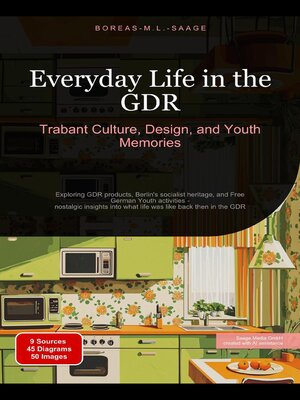Everyday Life in the GDR
ebook ∣ Trabant Culture, Design, and Youth Memories
By Boreas En. M. L. Saage

Sign up to save your library
With an OverDrive account, you can save your favorite libraries for at-a-glance information about availability. Find out more about OverDrive accounts.
Find this title in Libby, the library reading app by OverDrive.



Search for a digital library with this title
Title found at these libraries:
| Library Name | Distance |
|---|---|
| Loading... |
Dive into the fascinating world of everyday life in the GDR through this comprehensive exploration of East German culture, design, and youth experiences. This book offers an authentic glimpse into what daily existence was like back then in the GDR, focusing on the material culture and social practices that defined an era.
Discover the unique aesthetic of GDR design through detailed examinations of home interiors, furniture arrangements, and the distinctive color schemes that characterized East German living spaces. The book meticulously documents popular GDR products that shaped daily life, from household appliances to cosmetics, revealing how citizens navigated a consumer landscape defined by both scarcity and innovation.
A special focus is given to the iconic Trabant automobile, affectionately known as the 'Trabi,' which became much more than just a means of transportation. Learn about the maintenance rituals, spare parts networks, and the vibrant community that formed around this symbol of GDR mobility.
The book also provides rich insights into youth experiences through the lens of the Free German Youth organization, examining its structures, activities, and international connections. Discover how young people balanced official participation with creating their own cultural spaces through music, dance, and social gatherings.
For those interested in the GDR in Berlin, the book explores the architectural heritage of East Berlin, from distinctive Plattenbau housing estates to representative public buildings, and how these spaces have been transformed in the post-reunification era.
Through carefully researched charts and engaging narratives, readers will gain a nuanced understanding of culinary traditions, holiday destinations, entertainment forms, and media consumption that characterized life back then in the GDR. Neither overly nostalgic nor dismissive, this book presents a balanced view of a vanished society whose material and cultural legacy continues to fascinate.







